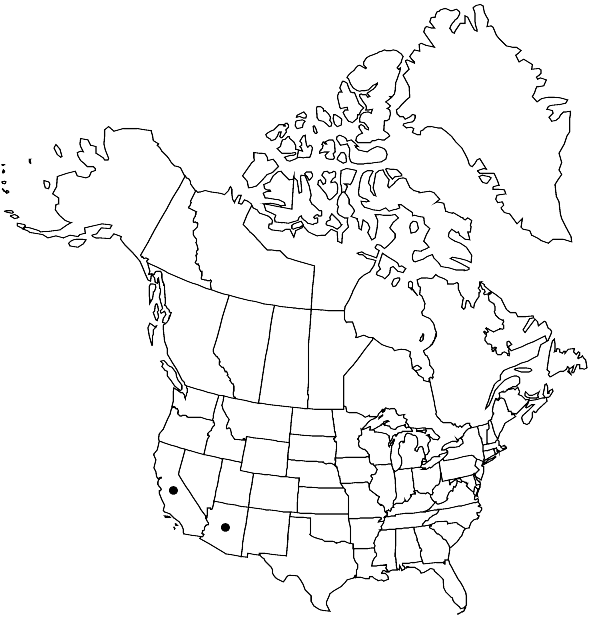Crossidium squamiferum var. squamiferum
Synonyms: Crossidium succulentum Holzinger & E. B. Bartram
Leaves with margins recurved to erect distally, undifferentiated in North American plants. Seta 7–20 mm, urn ovoid-cylindric, 1.7–2.7 mm; operculum 0.7–1.1 mm; peristome long, strongly twisted, sometimes cribrose at base, 250–1160 µm.
Phenology: Capsules mature (Aug-)Dec–Mar.
Habitat: Soil, sandy soil or rocks, dry washes
Elevation: moderate elevations (800-1000 m)
Distribution

Ariz., Calif., Europe, Asia (India), n Africa, Atlantic Islands (Canary Islands).
Discussion
North American specimens of var. squamiferum lack the differentiated border at the leaf base that is distinctive of the taxon elsewhere. Some specimens may show an indistinct proximal leaf border or a peristome somewhat cribrose at base, indicating intergradation with var. pottioideum. Despite this, var. squamiferum is recognized in North America by long setae, ovoid-cylindric capsules, and a long and twisted peristome.
Selected References
None.
Lower Taxa
None.
... more about "Crossidium squamiferum var. squamiferum"